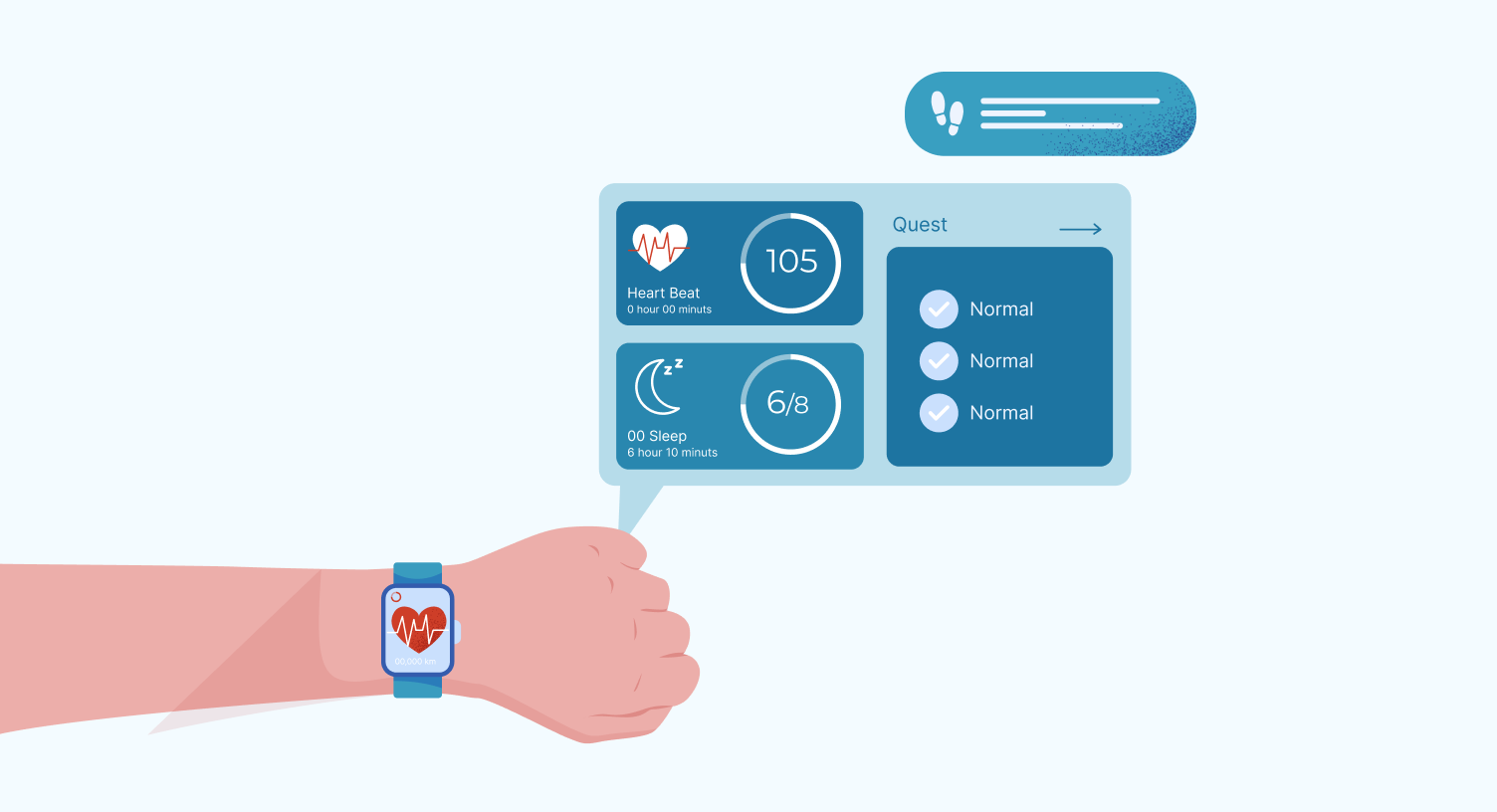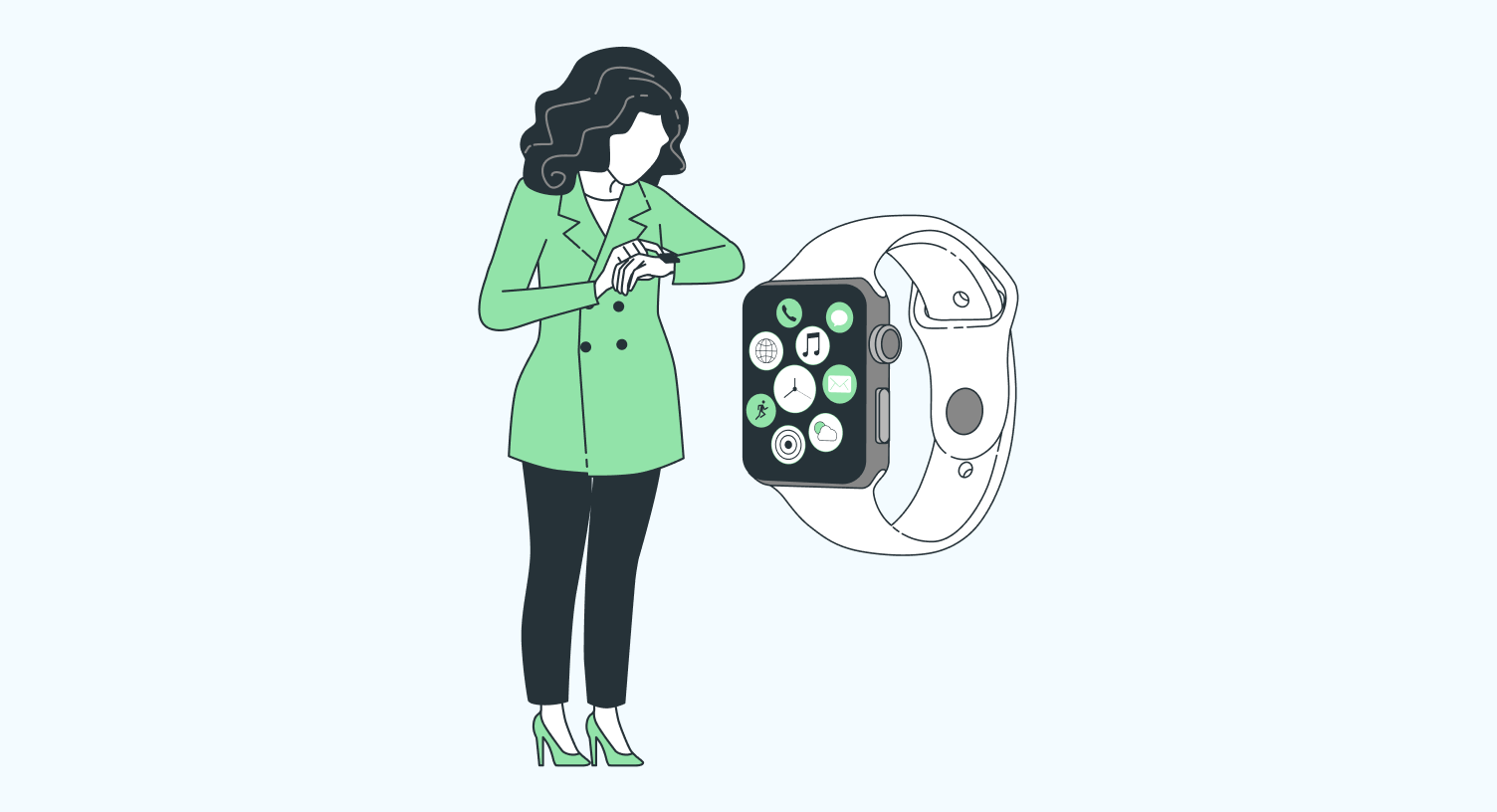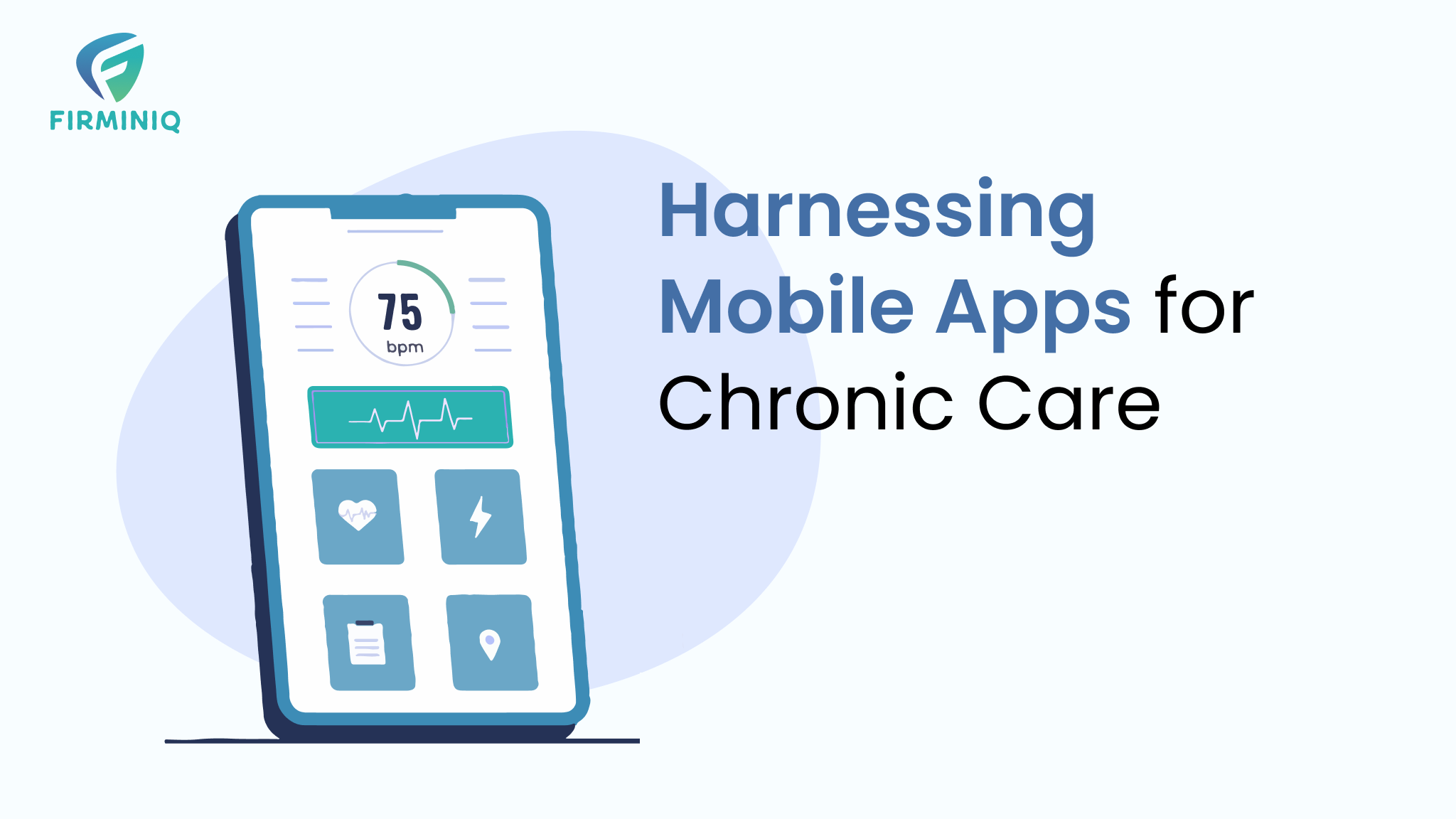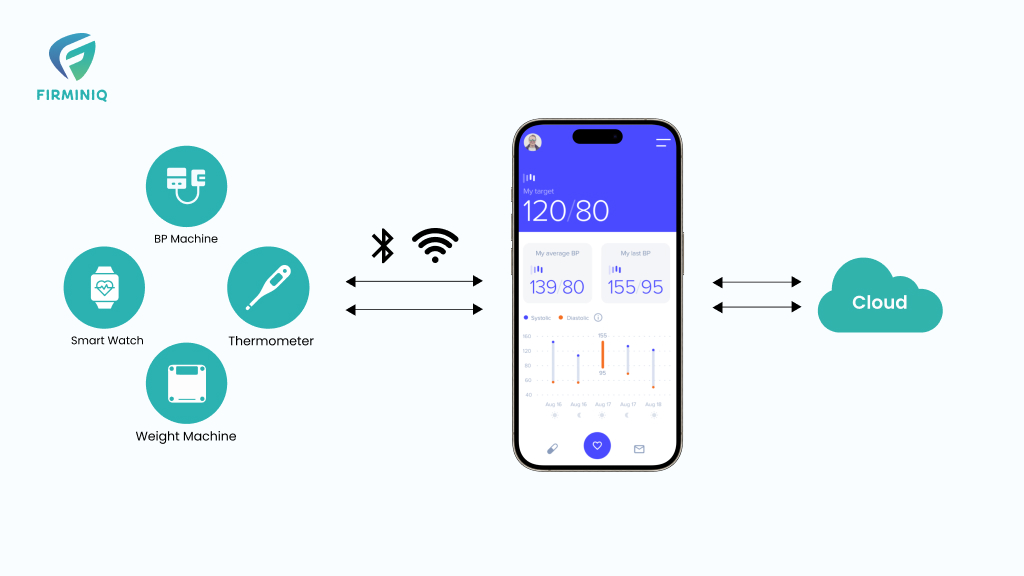In the ever-evolving landscape of health and wellness, wearable devices play a pivotal role in monitoring and managing personal well-being. Developing a health app that seamlessly connects with wearable devices, presents a unique set of challenges. In this blog, we will delve into the hurdles faced by developers in creating health apps for wearables and explore strategies to overcome them.
Types of Wearable Devices: Unveiling the Landscape
In the realm of wearables, devices such as smartwatches and fitness trackers have emerged as indispensable companions, providing users with insights into their health and daily activities. However, when developers embark on the journey of integrating apps with these wearables, they encounter unique challenges associated with each device type.
1. Fitness Trackers: Precision in Motion

Challenges
Fitness trackers play a crucial role in monitoring health metrics, such as step count and heart rate. However, ensuring the accuracy of data collected by fitness trackers poses a significant challenge. The rugged nature of fitness tracker usage demands durable app designs capable of withstanding various physical activities.
App Integration Solutions
Developers can address accuracy challenges by implementing algorithms to enhance the precision of health metrics, providing users with reliable data. Crafting durable apps that align with the rugged nature of fitness tracker usage ensures longevity and reliability in diverse physical environments. These solutions contribute to a more accurate and robust health monitoring experience for users.
2. Robust Bluetooth Connection: Tackling Connectivity Challenges

Challenges
Establishing a reliable Bluetooth connection with wearable devices is fundamental for real-time data syncing. However, maintaining a stable and secure connection poses challenges. Connectivity issues, ranging from pairing difficulties to intermittent disconnections, can disrupt the seamless flow of health data between the wearable and the mobile app.
App Integration Solutions
Developers can prioritize robust Bluetooth connectivity by utilizing the latest protocols and APIs. Implementing effective error-handling mechanisms addresses potential connection issues, ensuring a stable data exchange. Regular app updates accommodate changes in Bluetooth standards, enhancing compatibility with new wearables and addressing evolving connectivity challenges. These solutions contribute to a more reliable and uninterrupted health monitoring experience for users.
3. Data Security and Privacy Concerns: Safeguarding Sensitive Information

Challenges
Health data is extremely sensitive, requiring robust security measures to instill user confidence. Meeting stringent privacy standards while delivering a seamless user experience poses a delicate balancing act. Communicating the app’s privacy policy transparently becomes crucial in gaining user trust.
App Integration Solutions
Employing end-to-end encryption for transmitted health data enhances overall security. Transparently communicating the app’s privacy policy ensures users are informed about data collection, storage, and usage practices. Compliance with industry regulations, such as HIPAA (Health Insurance Portability and Accountability Act), provides an additional layer of trust, addressing concerns about the security of health information. These solutions contribute to a secure and trustworthy health monitoring experience for users.
4. Battery Optimization for Continuous Monitoring: Balancing Act for Longevity
Challenges
Continuous health monitoring places demands on a wearable device’s battery life. Striking a balance between real-time data collection and preserving battery longevity is crucial. Users expect uninterrupted monitoring without sacrificing the overall lifespan of their wearable device’s battery.
App Integration Solutions
Developers can implement smart algorithms to optimize data collection intervals based on user activity levels. Allowing users to customize the frequency of data syncing empowers them to find a balance between real-time monitoring and battery conservation. Providing clear instructions on maximizing battery life educates users on efficient app usage, contributing to an extended overall lifespan of the wearable device.
5. Multi-User Selection and Authentication: Personalizing the Experience

Challenges
In scenarios where multiple users share a single wearable device, developers face challenges in maintaining personalized health profiles for each user. Ensuring secure and seamless authentication mechanisms for each user accessing health data on shared devices becomes imperative.
App Integration Solutions
Developers can implement robust user authentication protocols, such as biometric recognition or secure PINs, to ensure secure access to individual health profiles. Providing options for users to set up and switch between individual profiles ensures personalized health insights for each user. Utilizing cloud-based storage securely stores and retrieves user-specific health data, enhancing the multi-user experience with personalized health monitoring.
Conclusion
Developing a health app for wearables demands a strategic and holistic approach to overcome the unique challenges associated with each device type. By prioritizing secure data transmission, optimizing user interfaces, addressing connectivity, privacy, and battery concerns, and incorporating multi-user functionality, developers can ensure a seamless and efficient health monitoring experience for users. The continuous evolution of the wearable landscape underscores the importance of staying abreast of emerging technologies and user expectations to create impactful health apps for the future.






